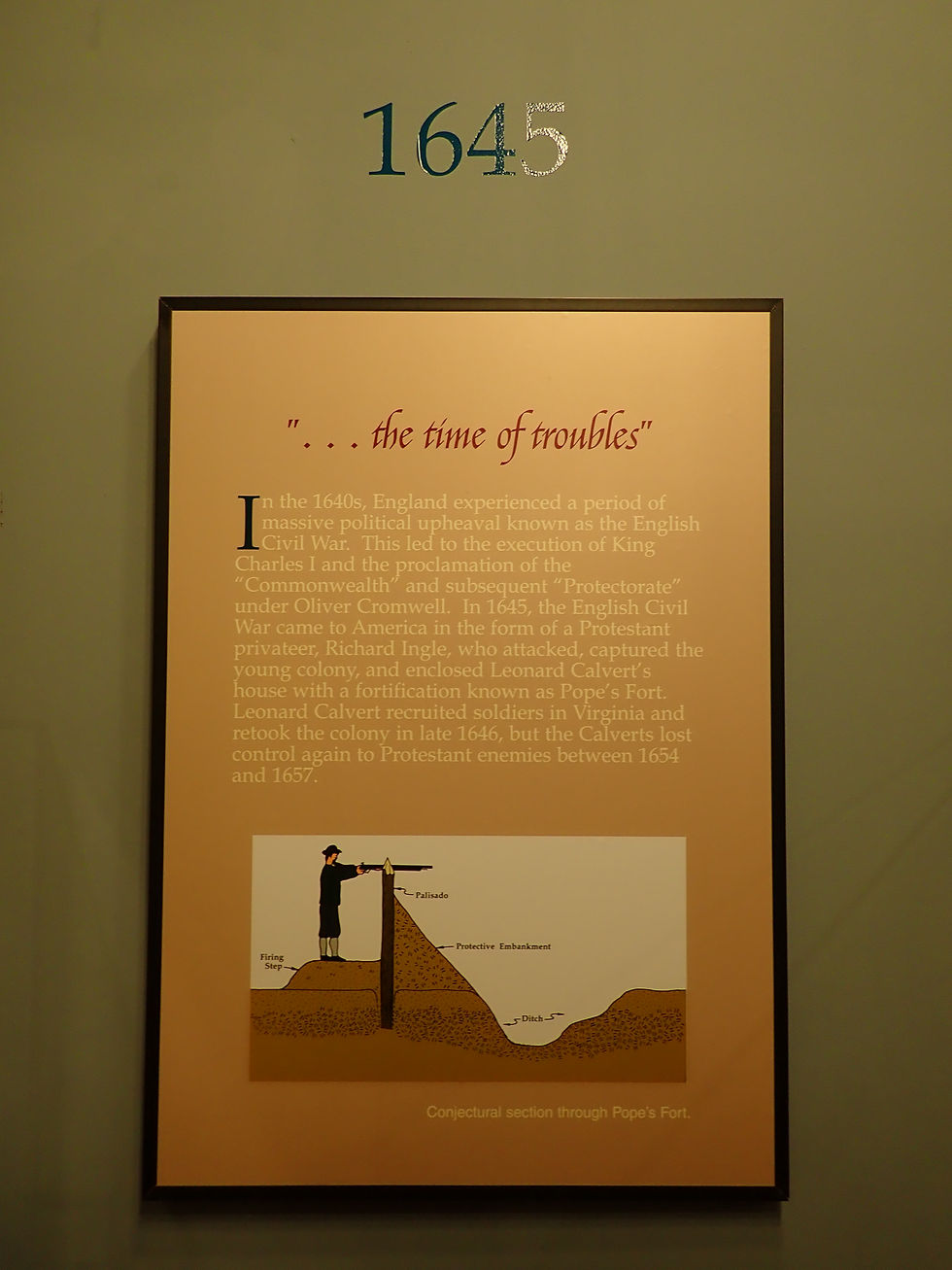
Historic St. Mary's City
Historic St. Mary's City is a living history museum on the site of Maryland's first capital. The original settlement was also the fourth oldest permanent English settlement in the United States.
St. Mary's City was first envisioned by Lord Baltimore (George Calvert) who was a Roman Catholic in a time of religious persecution in England. He envisioned a new colony where people of all faiths could live in freedom, tolerance, and safety.
What followed was the establishment of St. Mary's City the first Maryland colony and resulted in a struggle for religious freedom and which eventually led to the first law protecting religious freedom in America, as well as the founding of the State of Maryland. St. Mary's City was the capital of Maryland until 1694.
There is a large, reconstructed Roman Catholic Chapel, originally built in 1667, which served as the focal point of the Catholic faith in Maryland until 1704, when the royal governor ordered the building locked and never again to be used for religious purposes. The Jesuits dismantled the building and used its brick to construct a new manor house elsewhere. The chapel has now been reconstructed in its original location. It's a stunning reconstruction.
During the reconstruction, they brought in ground penetrating radar and discovered three lead coffins. Lead coffins would have been extremely rare in the 17th century. The museum has extensive information detailing the great lengths they went through in researching this and other structures on the site.
Just down from the chapel is the John Mackall Barn. it is one of the oldest surviving wooden barns in Maryland. After the museum acquired the structure in 1980, a study of it was conducted with tree-ring dating undertaken during a project supported by the Maryland Historical Trust. This analysis revealed the 1785 date of its construction, meaning it was erected soon after the end of the American Revolution.
Several structures on the property are represented only by a timber frames (so called "ghost frames") indicating the location of the original structures with signage providing details about what might have stood on the sites.
Mathias de Souza, an indentured servant of African and Portuguese descent, was the first black Marylander. After serving his indenture, he became a merchant and participated in the Maryland Assembly. A plaque memorializing de Sousa and detailing some of his activities is located in the museum.
There are several other reconstructed buildings on the site including a store, print house, and a public tavern.
At the far end of the city is the reconstructed state house. It was rebuilt to depict the state house of 1676 complete.
Down the road, the museum has a reconstructed tobacco farm complete with a barn, tenant houses, and garden areas. They also have chickens roaming around!
This was a really cool place. I had no idea about this history. And the historical displays and interpretations are top-notch.








































